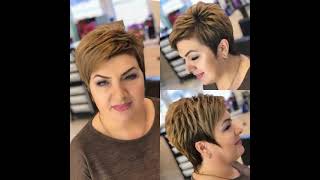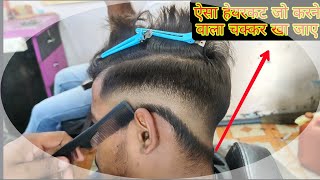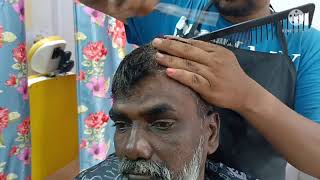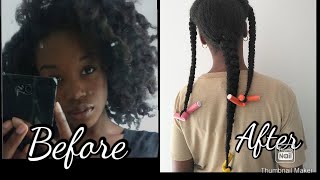6 Hair Problems You Can Self Diagnose And What To Do About Them
 When I first started my hair journey I went through a ton of times when I was in denial about some of my hair’s problems.
When I first started my hair journey I went through a ton of times when I was in denial about some of my hair’s problems.
Denial is always a safe place for us to exist especially when we are just meeting our length goals and something goes wrong. For example, just when your hair is starting to get past a certain length you realize that your ends are so dry and so broken that there is no way you could claim the length that you have because you have to cut your hair.
You might feel a bit disappointed and even rock with the raggedy ends for awhile just so you can have a bit of comfort but in the back of your mind you know what you have to do.
This denial bliss never lasts long, for many of us who have cared for our own hair for awhile know from experience that hanging on to bad ends is just as painful if not worse than getting your hair cut too short.
The thing is there is a lot that can happen to your hair during hair growth cycles and throughout the years as your hair grows. No regimen is perfect and we cannot control the environmental impact on our hair so all we can do is the best we can to care for our hair and catch problems before and as they come up.
As you get to know your curls you will find your self doing a bit of self diagnosis here and there and for those of us who are still having trouble determining how our hair behaves this post will help you to identify the signs of hair damage and what to do about it quickly.
1. Dry hair
If your hair is dry even when you moisturize it with your daily spritz or add a moisturizer to it then you need to do something with a little more impact. Dry hair breaks easily, feels rough, and tangles like crazy.
To combat it we suggest doing a weekly deep conditioning* treatment including moisturizers and emollients depending on the season you are in. Read this post about dry hair now to see exactly what we mean.
2. Split ends
Split ends are easy to detect because they are physical traits that are pretty obvious. If you look at the ends of your hair you will see the little splits on the strand that have to be removed. The only effective way to deal with split ends is to cut them off because the split only gets worse as the damage progresses. Read this post for more on slit ends.
3. Weak strands
How do you know if your strands are weak? Maybe they snap easily or your hair appears dull and lacks ‘life’. Your curls are not clumping like they used to and all you are left with are frayed individual strands prone to damage.
Weak strands are easy to spot when you know what your hair should look like when your hair is healthy, and if you aren’t sure but you kind of think your hair is weak, chances are you are headed in the direction of weak strands anyway.
To fix this issue you need to do a protein treatment. This adds structure to your curls and helps your curls to clump and have the natural shine it used to have.
4. Heat damage
Have you been a bit excessive with heat? Heat damage is easy to spot because hair that was once curly is now stuck straight as if you added a relaxer to that portion of your hair.
The only way to get rid of heat damage is to remove the straight portions of the strand and do a protein treatment for affected areas that are not as straight as the rest. Read this post to learn how to successfully transition from heat damaged hair.
5. Excessive shedding vs breakage
Sometimes we get confused with excessive shedding vs breakage. Your hair can fall in a variety of ways, the ends of the hair can fall off, or the strand can snap in the middle and fall. All of these scenarios is breakage. Shedding is when the entire strand of hair falls from your roots. You will notice a little white bulb at the end of the strand which represents the part that left your hair follicle.
How you deal with breakage and shedding is similar but while you might be able to trim your hair and deep condition with protein for breakage, the root of what is causing your shedding might be a bit more involved.
Shedding can occur from changes in your diet, naturally after having a baby, or it can happen during times of stress. This means that dealing with it requires that you change aspects of your lifestyle as well as physically focusing on your hair.
If you are experiencing excessive shedding then we suggest that you read this post, this one and this one.
6. Single Strand Knots
These little guys almost did not make the list but I know that some of you who are noticing these little knots at the end of your hair for the first time might have questions.
I have a love hate relationship with these knots because I know that it is an never ending battle which they always win because my hair is very fine and very curly. I also know that I do not like them at all even though they come with the territory.
Many naturals have chosen to live with single strand knots and while that might be ok, you should know that if they are excessive you might need a trim to give yourself a fresh start.
SSK’s are caused from the strand curling on itself and making a small tight knot. There is not much we can do about that because that is what curly hair does. If you want to avoid them completely you must wear your hair stretched 90% of the time which might just be convenient for you.
For those of us who love a great wash and go with shrinkage and all its glory, single strand knots will always be a part of our lives.
Are you good at self diagnosing your hair issues? Comment below!




